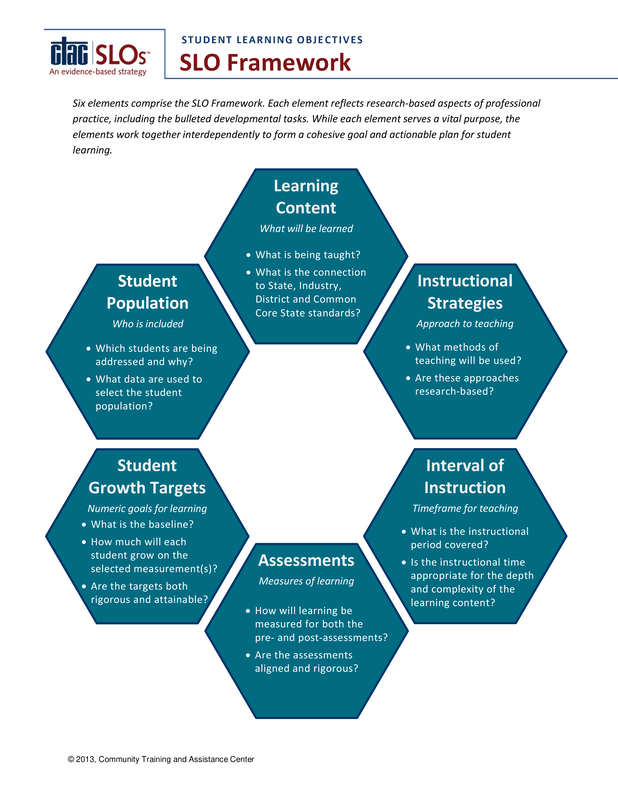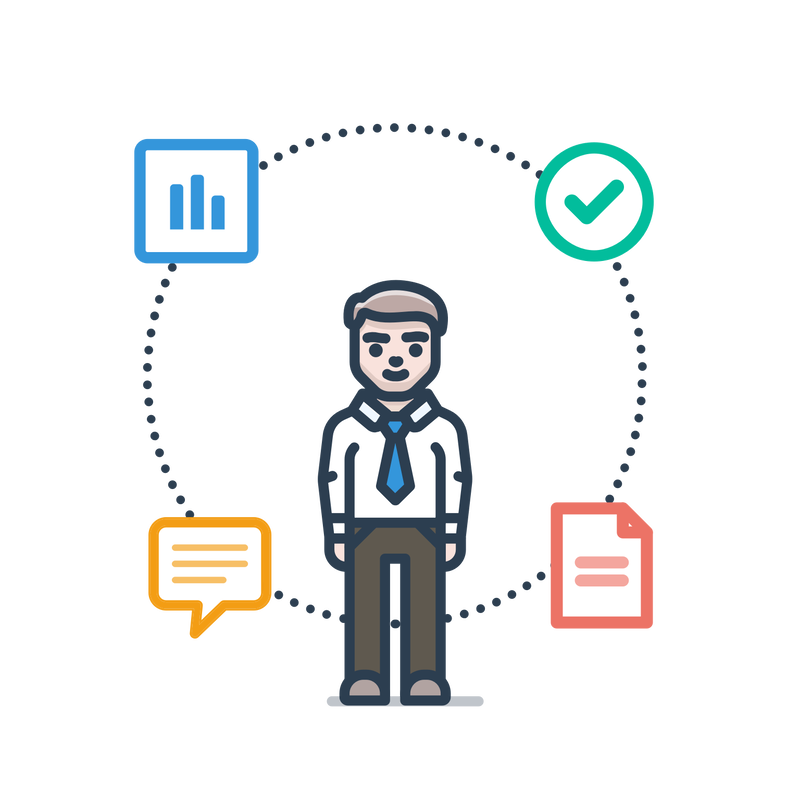| Unityoga.org |
section three |
Teaching Evaluation |
Student Learning Objectives: Definition and Purpose
"long-term, measurable academic goals that educators set for their students.""SLOs have become a significant part of teacher evaluations in many states" |
Introduction:
A student learning objective (SLO) “is a specific learning goal and a specific measure of student learning used to track progress toward that goal” (Reform Support Network, 2011, p. 1). The purpose of an SLO is to measure student growth over time which provides data that can be used to improve instructional practice. SLOs are currently used by many states as an important part of teacher evaluations. Growth in learning can be measured using a variety of methods depending on content area and available assessment programs. Data from large-scale standardized tests given by states or districts (as discussed in Section Two) which commonly test mathematics and reading, can be used, as well as data from assessed performance tasks (as discussed in Section One) for non-tested subjects; or even teacher created diagnostic pre- and post-tests.
Why Rhode Island?
After reviewing the literature regarding Student Learning Objectives (SLOs) and their application from several states that use them including Ohio, Colorado, Wisconsin, New York, and Michigan; the SLO templates and guidance offered by the Rhode Island Department of Education seemed to stand out as well researched, developed, and evolved. Most of the state templates and related literature were found to be quite similar in content and structure, though varied greatly in appearance and some required details; such as, grade level, interval of instruction, rationale, and administrative sections like reviewers’ signatures. Rhode Island’s forms were found to contain fields and good instructions for all the important details, without many extra state-specific features, and therefore were chosen for use as a model example and sourced from the Rhode Island Department of Education website. All downloadable templates and other resources used for this example SLO can be found below. |
Student Learning Objective
|
Your browser does not support viewing this document. Click here to download the document.
The baseline data for the above SLO sample was generated from the previous year students’ work produced from the same task and evaluated with the same rubric. Targets for the sample year task results were set relative to the baseline data that were deemed to be rigorous, yet attainable with rationale provided in the SLO template according to the instructions given on the RIDE Anatomy of a student learning objective.
The source of evidence was identified and explained in the corresponding template field as the aforementioned performance task entitled “Advertising for Members” (see above embedded document for details). Implementation and evaluation of the assessment with the associated rubric attached in the embedded document (and found in Section One), was also detailed in the “evidence” field on the template. Finally, the results were added and discussed with relevant charts and graphs attached to the finalized SLO, ready for evaluation by the school administration. The completed SLO example can be viewed in the above embedded document or downloaded as a Word doc using the link above. | ||||||
slo templates, guides, checklists, resources, and samples |
Rhode Island SLO template, Click the button below for a blank SLO template like the sample above, to help get started writing an SLO and measuring student progress for the evaluation of teacher, curriculum, and intervention effectiveness.
According to the Rhode Island Department of Education:
"Student Learning Objectives (SLOs) are long-term, measurable academic goals that educators set for their students. They should focus on priority content, be measured by appropriate sources of evidence, and include specific targets for student mastery or progress. They are used as a measure of student learning by all educators participating in the Educator Evaluation System." (RIDE, 2018). The full RIDE SLO 2014 guide book can be found here: Measures of Student Learning SLO Resources:
(From the Rhode Island Department of Education website) Student Learning Objective Documents:
Other States' SLO Resources and Samples
Other States' SLO Templates
SLO approval Rubrics and Checklists
|
slo overview and
|
six elements of an sloThe Process for Writing a Student Learning Objective
The embedded document below outlines the general process of writing student learning objectives. It should be used in conjunction with appropriate templates, rubrics, checklists, and other supports available to produce an effective SLO. Other outlines and guides can be found in the resource list above.
Your browser does not support viewing this document. Click here to download the document.
support for professional developmentTeachers need professional support and development. MDK12.org, in collaboration with the Maryland Department of Education states their purpose “to help schools analyze their state assessment data and guide them in making data-based instructional decisions” (n.d.). The authors wrote that schools often continue interventions without evaluating their success, which can lead to wasted resources and time. They suggest a systematic method for evaluating interventions (and teachers) that starts with identifying the goals and the evidence of students having achieved proficiency, and ends with assessment data collection and analysis of the data. As they say “It is only by monitoring student progress that the teacher will have any information to use in planning appropriate instruction” (n.d.). SLOs have been shown by the University of Colorado Center for Assessment, Design, Research and Evaluation to help improve student achievement when used correctly, the results of their study can be seen here: Evaluating SLOs in the Denver Public Schools.
|
Continue to the Forum for a contact form and additional useful resources for supporting, assessing, and evaluating student progress and teacher effectiveness.
Assessment and Evaluation Toolkit - navigation
|
Unityoga.org
one Y? one answer... |

